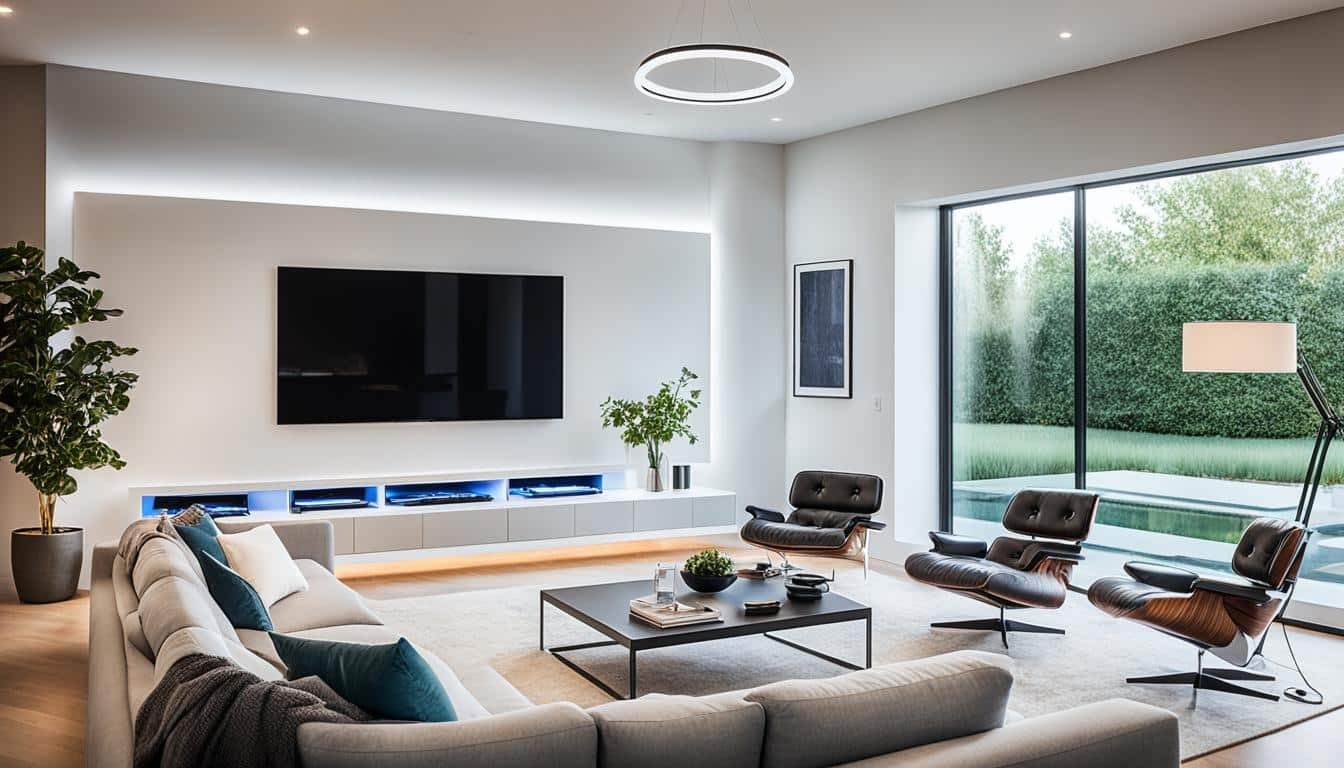Home automation has become a transformative force in modern living, offering convenience, security, and efficiency. Smart home devices and home automation technology have revolutionized the way we interact with our living spaces. From controlling lighting, temperature, and entertainment systems to enhancing security features, smart home technology has changed the way we envision our homes. Let’s explore the wonders of modern smart home technology and the benefits it brings.
Key Takeaways:
- Smart home devices and home automation technology have transformed the way we live and interact with our homes.
- Smart home technology offers convenience, security, and efficiency, enhancing the overall living experience.
- Control lighting, temperature, entertainment systems, and security features through smart home devices and automation.
- Smart homes provide a personalized and adaptable living environment.
- The future of smart homes promises endless possibilities for innovation and personalization.
The Rise of Smart Homes
In recent years, smart homes have become increasingly popular as homeowners embrace the conveniences and capabilities offered by connected technologies. With a range of smart home features and advancements in home automation, the concept of a connected home has transformed from a futuristic vision to a reality for many.
Smart home features encompass a variety of connected devices, sensors, and systems that seamlessly communicate with each other. This integration allows homeowners to have unprecedented control and access over various aspects of their homes, from lighting and temperature to entertainment systems and even security.
Home security systems form a fundamental aspect of smart homes, leveraging advanced technology to provide enhanced safety and peace of mind. These systems include features like surveillance cameras, smart locks, and motion sensors that work together to create a robust security network.
Another significant component of smart homes is voice control technology, which has rapidly gained popularity. Voice-activated assistants such as Amazon’s Alexa and Google Assistant enable homeowners to control their smart devices effortlessly using voice commands. This intuitive and hands-free approach to managing the connected home enhances convenience and simplifies daily tasks.
As the popularity of smart homes continues to rise, companies are investing more resources into developing innovative technologies and expanding the range of available smart home features. This constant evolution drives the connected home industry forward and allows homeowners to create a truly customized and efficient living environment.
Now, let’s take a closer look at the key features and benefits that define smart homes:
Key Features of Smart Homes
| Smart Home Feature | Description |
|---|---|
| Connected Devices | Interconnected devices that communicate and work together to provide seamless control over various aspects of the home. |
| Home Security Systems | Advanced security features, including surveillance cameras, smart locks, and motion sensors, that enhance home safety. |
| Voice Control Technology | Voice-activated assistants that enable homeowners to control smart devices through voice commands, enhancing convenience and hands-free operation. |
| Automation | Automated processes that enable the home to adapt and respond to the needs of its occupants, improving efficiency and comfort. |
| Energy Management | Smart thermostats and energy monitoring systems that optimize energy usage and reduce utility costs, promoting sustainability. |
| Entertainment Systems | Effortless control and automation of audio and video devices, creating an immersive entertainment experience. |
With these key features, smart homes offer homeowners an unprecedented level of convenience, security, and control over their living spaces. The integration of smart technologies creates a seamless and efficient living environment, transforming houses into connected homes that enhance the overall quality of life.
Next, we’ll explore the convenience and control that smart home technology brings to homeowners, further delving into the myriad of benefits associated with these innovative systems.
Convenience and Control at Your Fingertips

When it comes to smart home technology, convenience is at the forefront of its many benefits. With smart devices and automation, controlling various aspects of your home is just a touch away. Whether it’s adjusting the lighting, setting the perfect temperature, or enhancing security features, smart home systems put the power of convenience in your hands.
Imagine being able to control the lighting in your home without getting up from the couch or adjusting the thermostat to the ideal temperature before you even step through the front door. Smart home technology allows you to do just that. The convenience of controlling your home with a touch of your smartphone or a simple voice command makes daily tasks effortless and seamless.
By integrating smart devices and voice command technology, smart homes create a living environment that adapts to your needs and preferences. With a voice-activated assistant like Amazon’s Alexa or Google Assistant, you can control and command your smart devices without lifting a finger. Whether it’s turning off the lights in the living room or locking the front door, you have complete control, all at your fingertips.
With the convenience and control offered by smart home technology, managing your home becomes a breeze. Routine tasks are simplified, allowing you to focus on what really matters. Whether it’s adjusting the lighting to create the perfect ambiance or ensuring your home is secure with a tap on your smartphone, smart home technology enhances your overall living experience.
Intelligent Lighting Solutions

Smart lighting systems have become a fundamental feature of modern smart homes, offering homeowners unparalleled control over their lighting environment. These advanced systems allow users to adjust brightness, color, and ambiance to suit their preferences, all with the convenience of smartphone apps or voice commands.
With smart lighting, the possibilities are endless. Whether you want to create a cozy atmosphere for a movie night or set the perfect lighting for a dinner party, smart lighting systems make it effortless. They also offer the flexibility to schedule lighting changes based on the time of day or specific activities.
But what sets smart lighting apart is its automation capabilities. These systems can learn user behavior and automatically adjust lighting settings accordingly, ensuring a seamless and tailored experience. Imagine waking up to a gentle, gradually brightening light or returning home to a well-lit environment without even having to touch a switch.
Moreover, smart lighting systems contribute to energy savings and sustainability. With the ability to dim lights when not in use and optimize energy consumption, homeowners can reduce their carbon footprint and save on electricity bills.
Enhance your living space with intelligent lighting solutions and experience the convenience, personalization, and energy efficiency they bring.
| Benefits of Intelligent Lighting Solutions | Features |
|---|---|
| 1. Customization | Adjustable brightness, color, and ambiance |
| 2. Convenience | Control through smartphone apps or voice commands |
| 3. Automation | Learn user behavior and automatically adjust lighting |
| 4. Energy Savings | Dim lights when not in use and optimize energy consumption |
Intelligent lighting solutions provide the perfect combination of aesthetics, functionality, and efficiency, transforming your home into a truly smart living space.
Enhanced Security Features

When it comes to the safety and security of our homes, smart home technology offers advanced solutions that provide homeowners with peace of mind. With smart security systems, including surveillance cameras and intelligent locks, homeowners can take their home security to the next level.
Smart security systems allow for seamless integration into a comprehensive security system, creating a robust and interconnected network. Homeowners can monitor their property remotely, receive instant alerts, and even grant access to visitors from anywhere in the world.
Surveillance cameras play a vital role in smart home security. They provide homeowners with a live feed of their property, allowing them to keep a watchful eye on their surroundings. Whether it’s checking in on package deliveries or monitoring for any suspicious activity, surveillance cameras offer enhanced visibility and awareness.
Intelligent locks are another essential component of smart home security. These locks can be remotely controlled and monitored, providing homeowners with the ability to secure their home from anywhere. From granting temporary access to service providers to ensuring that all doors are locked before bed, smart locks offer convenience and added protection.
The integration of smart security systems enhances the overall security of a home by creating a comprehensive and interconnected network. These systems not only provide homeowners with greater control and visibility but also act as a deterrent to potential intruders.
With smart security, homeowners can enjoy the benefits of a secure and protected home while being able to monitor and control their property with ease. The peace of mind that comes with enhanced security features is invaluable, allowing homeowners to focus on what matters most – their family’s safety.
Benefits of Smart Security:
- Remote monitoring and access control
- Instant alerts and notifications
- Enhanced visibility and awareness
- Convenience and peace of mind
| Smart Security Features | Benefits |
|---|---|
| Surveillance Cameras | Enhanced visibility and monitoring |
| Intelligent Locks | Remote control and access management |
| Comprehensive Integration | Seamless network of security systems |
Energy Efficiency and Sustainability
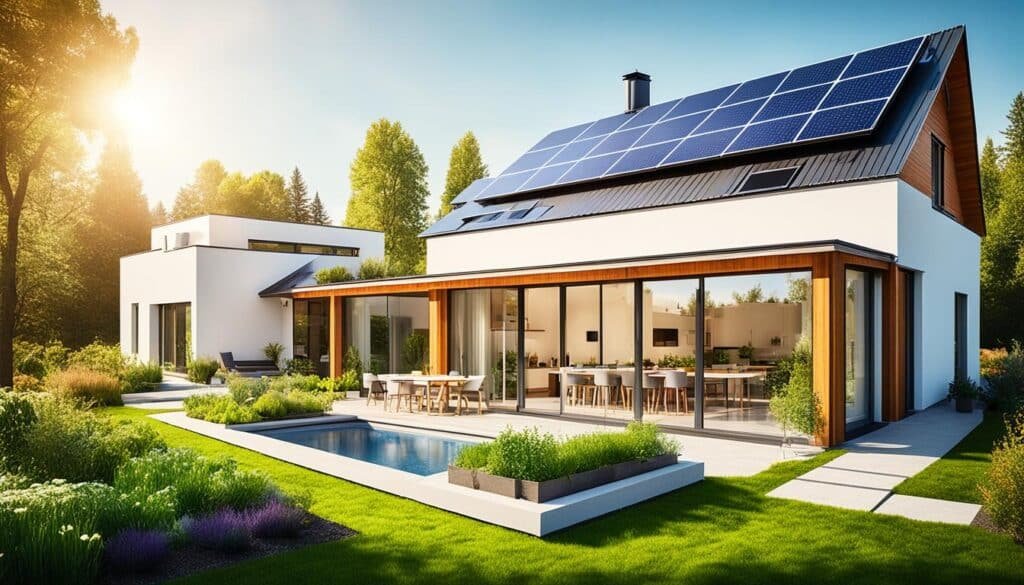
In the realm of smart home technology, energy efficiency and sustainability go hand in hand. By incorporating smart thermostats, homeowners can not only create a comfortable living environment but also optimize their energy consumption, leading to cost reductions and environmental benefits.
Smart thermostats are designed to learn user preferences and adjust heating and cooling settings accordingly. By analyzing data such as temperature patterns and occupancy, these devices can intelligently regulate the HVAC system, ensuring optimal comfort while minimizing energy waste. This level of energy management helps homeowners reduce their carbon footprint and make a positive impact on the environment.
Furthermore, smart home systems can provide valuable insights into energy consumption patterns and suggest ways to optimize usage. By monitoring and analyzing data from various connected devices, homeowners gain a comprehensive understanding of their energy usage habits and can make informed decisions to conserve energy.
Let’s take a look at some of the key benefits of incorporating energy-efficient features in smart homes:
- Cost savings: By optimizing energy consumption, smart home technology helps homeowners save on energy bills in the long run. With smart thermostats and energy management systems, it’s possible to identify energy-hungry appliances, adjust usage patterns, and take advantage of off-peak pricing.
- Environmental impact: By reducing energy waste and optimizing usage, smart homes contribute to a greener planet. Energy-efficient practices, such as using smart thermostats, can make a significant difference in conserving natural resources and reducing greenhouse gas emissions.
- Enhanced comfort: Smart thermostats allow homeowners to customize their living environment to suit their comfort preferences while ensuring energy-efficient temperature control. This personalized approach creates a comfortable and enjoyable living space.
Cost Savings from Energy Efficiency
According to the U.S. Department of Energy, heating and cooling account for nearly half of the average home’s energy consumption. By adopting energy-efficient practices and utilizing smart thermostats, homeowners can significantly reduce their energy usage and save costs. Let’s take a look at a comparative analysis of energy savings achieved through smart thermostat usage:
| Energy Savings Comparison | Average Annual Energy Savings |
|---|---|
| Homes without smart thermostats | $180 |
| Homes with smart thermostats | $300 |
As evidenced by the table above, incorporating smart thermostats can lead to an average annual energy savings of $300 compared to homes without this energy-efficient technology. These savings not only contribute to reduced energy consumption but also help homeowners allocate their budget to other essential areas.
With energy efficiency and sustainability at the forefront of smart home technology, homeowners can take part in building a more eco-friendly world while enjoying the numerous benefits of a smart and efficient living space.
Entertainment and Automation
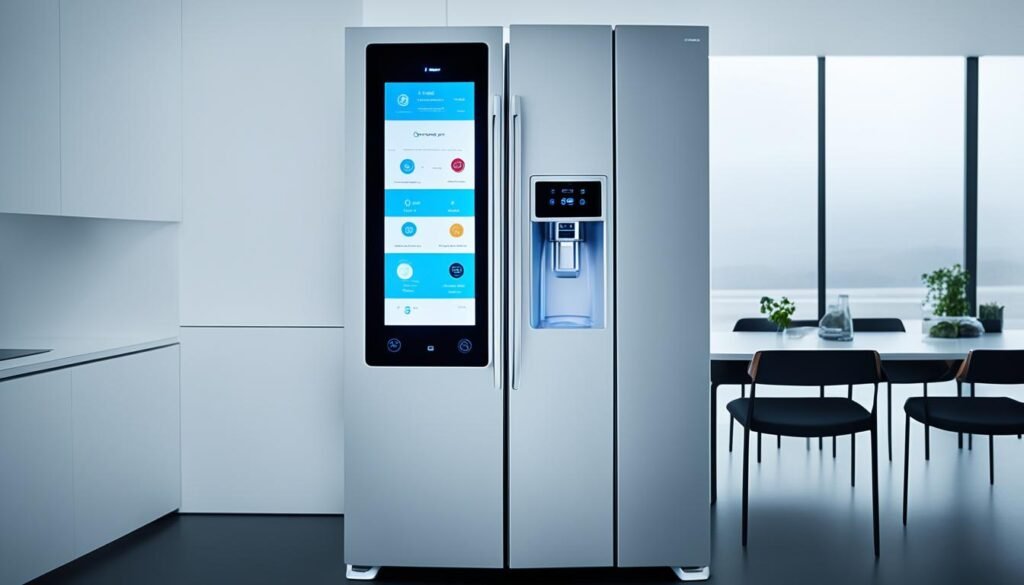
Smart home technology has revolutionized entertainment systems, providing seamless entertainment and centralized control for homeowners. With just a few taps on their smart devices or a simple voice command, homeowners can effortlessly control various audio and video devices, creating a unified and immersive entertainment experience.
Whether it’s streaming their favorite movies and shows, adjusting volume levels, or creating personalized playlists, smart home technology brings convenience and ease to entertainment. Gone are the days of searching for remote controls or dealing with tangled wires.
And it doesn’t stop there. Smart home technology extends its reach to smart appliances as well, such as refrigerators and washing machines. These appliances can be seamlessly integrated into the smart home ecosystem, allowing homeowners to monitor and control their appliances with ease.
| Benefits of Smart Appliances | Description |
|---|---|
| Convenience | Access and control your appliances from anywhere through your smartphone or voice-activated assistant. |
| Energy Efficiency | Smart appliances can optimize energy usage, reducing both your carbon footprint and utility bills. |
| Time Savings | Program your appliances to have your clothes washed and ready or have your refrigerator stocked when you need it. |
Imagine checking your refrigerator’s contents while at the grocery store or starting your laundry from your office. Smart appliances not only enhance convenience but also contribute to a more efficient and streamlined living experience.
With smart home technology, entertainment and daily tasks are seamlessly integrated, creating a home environment that adapts to your needs and preferences.
Voice-Activated Assistants
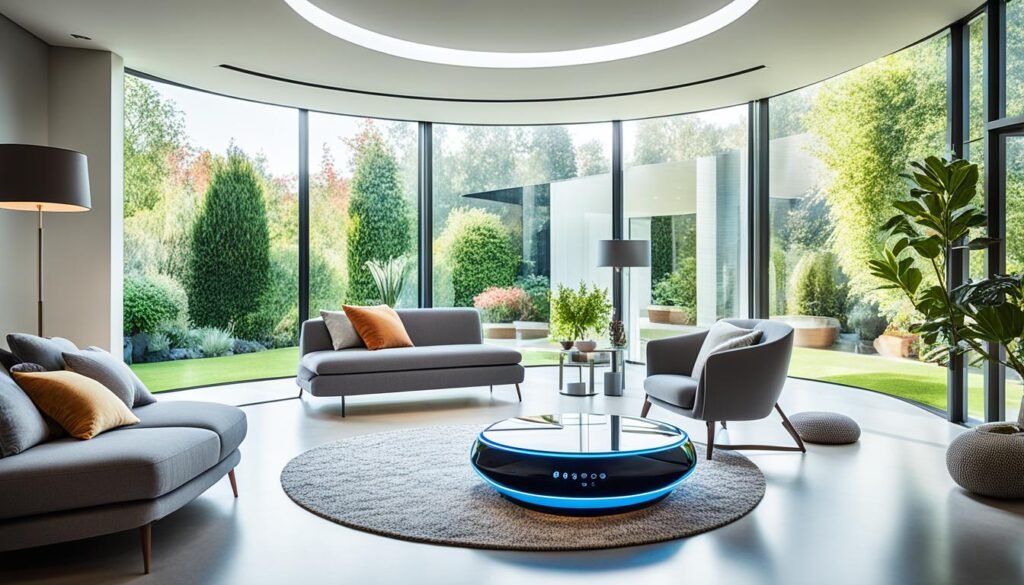
Voice-activated assistants have revolutionized the way we interact with smart home technology. With the rise of voice control technology, smart speakers equipped with voice assistants like Amazon’s Alexa and Google Assistant have become essential companions in our homes. These intelligent virtual assistants respond to voice commands, providing seamless and hands-free control over a wide range of smart devices.
Through voice-activated assistants, users can effortlessly manage their smart home ecosystem, controlling devices such as lights, thermostats, security systems, and entertainment systems with simple voice commands. The integration of voice control technology with smart speakers allows for a natural and intuitive way of interacting with our smart homes, making daily tasks more convenient and efficient.
Furthermore, voice-activated assistants facilitate communication between different devices within the home, enabling seamless automation and synchronization. For example, users can create custom routines to control multiple devices with a single voice command, such as saying “Goodnight” to turn off lights, lock doors, and set the alarm.
Benefits of Voice-Activated Assistants:
- Convenient and hands-free control over smart devices
- Enhanced automation and synchronization between devices
- Seamless integration with smart home ecosystems
- Personalized routines and commands for effortless management
- Efficient communication and coordination of devices within the home
With voice-activated assistants, smart home technology becomes more accessible and user-friendly, catering to a diverse range of needs and preferences. These assistants not only provide practical functionality but also add a touch of futuristic charm to our living spaces.
“Alexa, turn on the living room lights.”
Integration and Automation
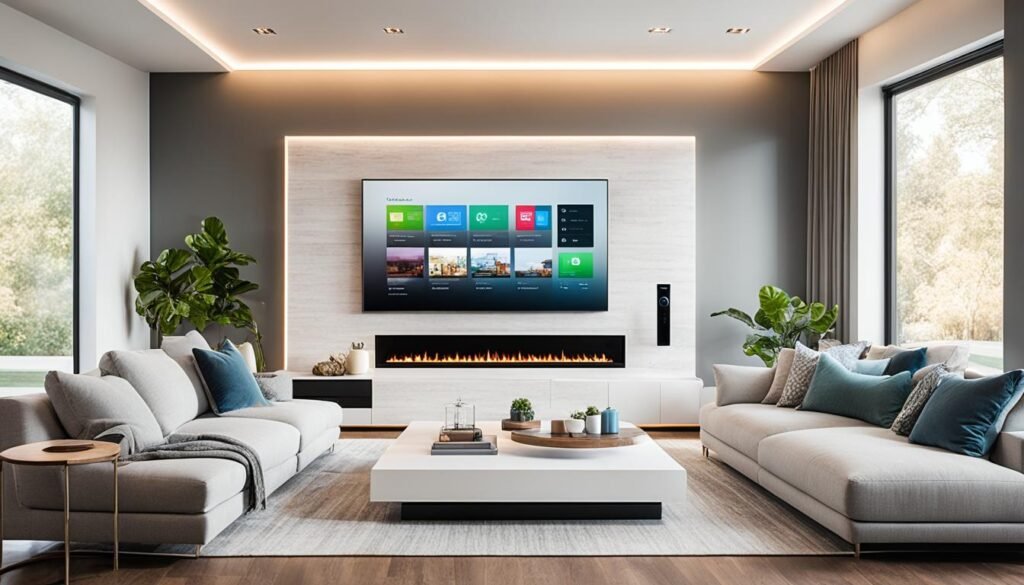
Smart home technology offers homeowners the seamless integration and automation of various devices and systems, creating a cohesive and efficient living environment. At the heart of this integration is a central smart home hub, acting as a control center that allows users to manage and automate different aspects of their homes through a single interface. By connecting smart devices, sensors, and systems, homeowners can enjoy the convenience of controlling and monitoring their homes from one central location.
Through the smart home hub, users can effortlessly customize and automate daily routines, such as adjusting lighting, temperature, and security settings. This automation not only simplifies tasks but also enhances comfort and convenience, as the home adapts to the residents’ preferences and schedules.
Additionally, the integration of various systems within the smart home ecosystem allows for improved energy efficiency. For example, the smart home hub can communicate with smart thermostats and appliances to optimize energy usage based on occupancy patterns and climate conditions. This automation contributes to energy savings and promotes sustainability.
Moreover, the seamless integration of different devices and systems creates a unified and streamlined user experience. The smart home hub acts as a central point of command, enabling homeowners to control multiple devices through a single interface or voice command. Whether it’s adjusting the lighting, playing music, or checking security cameras, the smart home hub simplifies the interaction with the smart home ecosystem.
With seamless integration and automation powered by the smart home hub, homeowners can truly experience the benefits of a connected home. The ability to control and automate various aspects of their living environment not only enhances convenience but also improves overall quality of life. From increased energy efficiency and personalized comfort to simplified daily routines, the integration and automation offered by smart home technology pave the way for a smarter and more harmonious future.
Expanded Possibilities – The Internet of Things
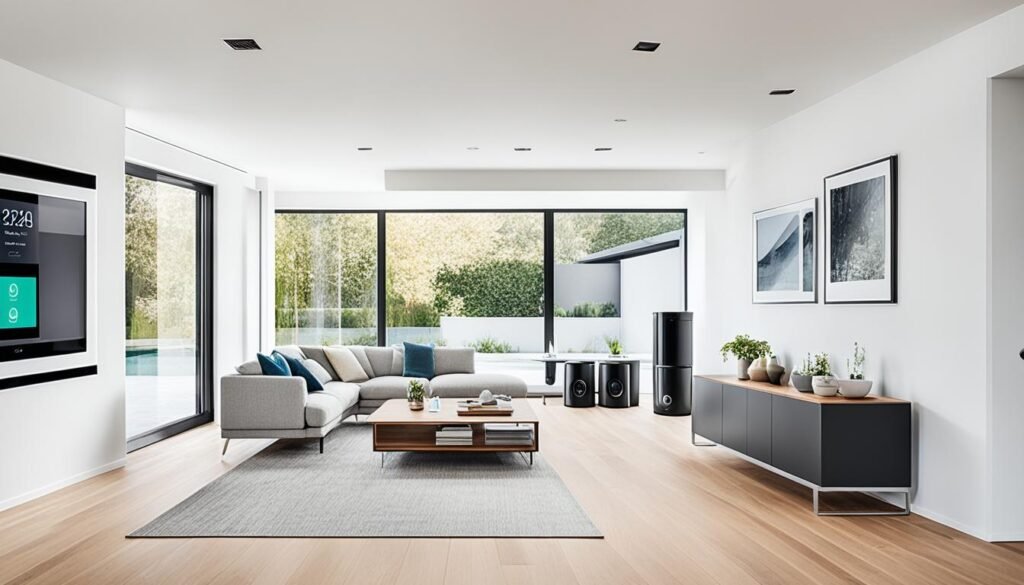
Smart home technology is a key component of the Internet of Things (IoT), a vast interconnected network where devices communicate and interact with one another. This network expands the possibilities for home automation and creates a seamless integration of various smart devices. By leveraging the power of the IoT, the smart home ecosystem transforms houses into intelligent environments, where devices work together to enhance convenience, security, and efficiency.
Imagine a home where your security system works in sync with your smart door locks, surveillance cameras, and motion sensors. When you leave the house, the security system automatically arms itself, locks the doors, and begins monitoring for any suspicious activity. If an unauthorized entry is detected, the security system sends you an immediate alert on your smartphone, allowing you to take appropriate action.
“The Internet of Things is about enabling smart devices to communicate and collaborate, ultimately creating a more intelligent and responsive living environment.”
Furthermore, the IoT enables homeowners to remotely control and monitor their connected devices from anywhere in the world. With a simple tap on a smartphone app, you can adjust the temperature, turn on the lights, or even start brewing a fresh cup of coffee before you arrive home. This level of control and automation not only adds convenience but also contributes to energy efficiency and cost savings.
The Internet of Things has also paved the way for innovative solutions that extend beyond individual homes. For instance, smart grids can optimize energy distribution based on real-time data, reducing energy waste and promoting sustainability on a larger scale. Additionally, the integration of smart cities with smart homes has the potential to revolutionize urban living, improving services like transportation, waste management, and public safety.
Achieving a Connected Future
To fully embrace the potential of the Internet of Things and create a truly connected future, standardization and interoperability are crucial. Manufacturers and developers need to ensure that smart devices can seamlessly communicate with each other, regardless of their brand or operating system. This will enable homeowners to mix and match products based on their preferences and needs, fostering a diverse and dynamic smart home ecosystem.
The expansion of 5G technology also plays a significant role in the advancement of the IoT. With faster and more reliable connectivity, 5G enables real-time data transmission and supports the increasing number of connected devices in smart homes. This contributes to faster response times, improved user experience, and unlocks new possibilities for innovative applications.
| Benefits of the Internet of Things | Challenges of the Internet of Things |
|---|---|
|
|
The Internet of Things opens up a world of possibilities for smart homes, where connected devices create a harmonious ecosystem that enhances our daily lives. From smart thermostats and voice-activated assistants to intelligent kitchen appliances, the IoT revolutionizes the way we interact with our homes and sets the stage for a more connected and efficient future.
Overcoming Challenges and Looking to the Future
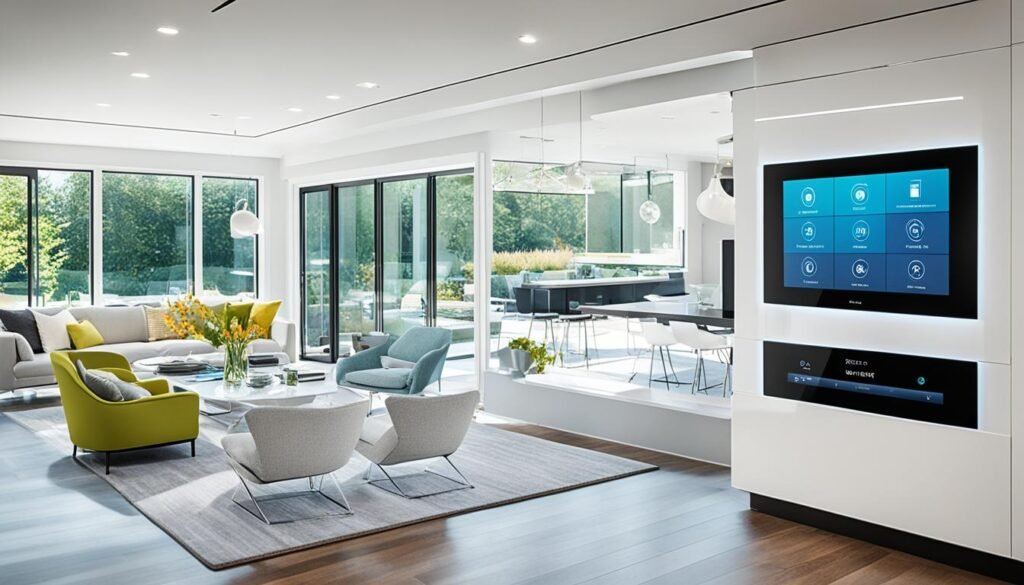
While home automation offers numerous benefits, it also presents unique challenges that need to be addressed. One of the main concerns is privacy and security. As smart homes become more connected, there is a growing need to ensure that personal data remains secure and protected from cyber threats. Manufacturers and developers are continuously working to improve security standards and encryption protocols to safeguard users’ privacy.
Another challenge is creating user-friendly interfaces that are intuitive and easy to navigate. With the increasing complexity of smart home systems, it is essential to design interfaces that are accessible to users of all technical backgrounds. Advancing technology aims to simplify the setup process and streamline the management of smart devices, making home automation more user-friendly.
Despite these challenges, the future of smart homes looks promising. As technology continues to advance, we can expect even more innovation and personalization in the world of home automation. The possibilities are endless, from seamlessly integrating smart devices to optimizing energy consumption and personalizing user experiences.
Imagine a future where your home can anticipate your needs and adjust the environment to suit your preferences. Automated systems will seamlessly interact with each other, creating a truly intelligent ecosystem that enhances your daily life. The future of smart homes is an exciting journey towards creating personalized and efficient living spaces.
The Potential of Advancing Technology
“Technology is not just a tool. It can give learners a voice that they may not have had before.” – George Couros
Advancing technology holds the key to unlocking the full potential of smart homes. As artificial intelligence and machine learning continue to develop, smart home systems will become even more intuitive and adaptable. Homes will be able to learn from occupants’ behaviors and preferences, creating personalized experiences that align with their needs.
Moreover, advancing technology will further improve the integration and interoperability of smart home devices. We can look forward to a future where different brands and devices seamlessly work together, eliminating compatibility issues and expanding possibilities for customization.
Another area of advancement is the use of voice control technology. Virtual assistants like Amazon’s Alexa and Google Assistant are already becoming an integral part of smart homes. As voice recognition technology continues to improve, voice commands will become even more accurate and responsive, allowing for a more natural and seamless interaction with smart devices.
The Importance of Collaboration
The future of smart homes relies on collaboration between different industries. Manufacturers, developers, and service providers need to work together to create standardized protocols, ensuring compatibility and security across devices and platforms. Collaboration also allows for the exchange of knowledge and expertise, driving innovation and pushing the boundaries of what smart homes can offer.
The challenges of home automation can be overcome through collective efforts that prioritize user privacy, security, and seamless integration. By staying adaptable and open to collaboration, the future of smart homes holds the promise of transforming our living spaces into intelligent ecosystems that enhance our quality of life.
Conclusion
The wonders of modern smart home technology have revolutionized the way we live, offering convenience, security, and energy efficiency. Smart homes provide a new level of comfort and control, thanks to intelligent lighting solutions, enhanced security features, seamless entertainment, and voice-activated assistants.
As technology continues to advance, the potential for smart homes is limitless. Imagine a future where our homes are not just smart but truly intuitive, enhancing our quality of life in ways we could have only imagined. With smart homes, we can enjoy the convenience of controlling various aspects of our homes with a simple touch on our smartphones or through voice commands.
Welcome to the world of smart homes – the future of living. Embrace the possibilities that smart home technology brings and experience a life of enhanced comfort, security, and efficiency. Say goodbye to manual tasks and welcome a home that adapts to your preferences and needs. Get ready to live in a truly intelligent and connected environment that enhances your everyday life in ways you never thought possible.
Also Refer : How Smart Home Automation Enhances Everyday Life
FAQs
Q: What are smart home appliances?
A: Smart home appliances are devices like smart refrigerators, smart thermostats, smart TVs, and smart plugs that can be controlled remotely and are often integrated into a central smart home system.
Q: How can I transform my living space into a smart home?
A: You can transform your living space into a smart home by installing smart devices like smart bulbs, smart garage doors, and smart appliances that can be controlled remotely or through voice commands using devices like Amazon Echo or Google Home.
Q: What kinds of devices can be integrated into a smart home system?
A: Devices like smart TVs, smart refrigerators, alarm systems, and sensors can be integrated into a central smart home system to monitor your home and manage various aspects of your home needs.
Q: How do smart home systems with smart plugs work?
A: Smart home systems with smart plugs allow you to turn on or off connected devices, such as lighting or power strips, remotely or on a schedule, using a smartphone or voice command.
Q: What are some cutting-edge smart home technologies available today?
A: Some cutting-edge smart home technologies include advanced alarm systems, home monitoring cameras, and devices like smart thermostats that can learn and adapt to your preferences.
Q: What are the benefits of setting up a smart home?
A: Setting up a smart home can provide convenience, energy efficiency, and enhanced security, allowing you to control and monitor your home even when you’re away from home.
Q: How can I control smart home devices from a single interface?
A: You can control smart devices from a single interface using systems like Amazon Echo or Google Home, which allow you to command and manage various smart devices with voice control and app integration.
Source Links
- https://al-voip.com/blogs/news/transforming-the-future-exploring-the-wonders-of-smart-homes
- https://medium.com/@seo.searchosis/the-future-of-comfort-and-convenience-exploring-the-wonders-of-home-automation-b58b8b6fbf0c
- https://medium.com/@seo.searchosis/the-future-unveiled-exploring-the-wonders-of-home-automation-65d2aeeb1c0a
